Which two statements reflect the benefits of implementing the ADVPN solution to replace conventional VPN topologies? (Choose two.)
Which two statements about SLA targets and SD-WAN rules are true? (Choose two.)
Which two statements about SD-WAN central management are true? (Choose two.)
Refer to the exhibit.
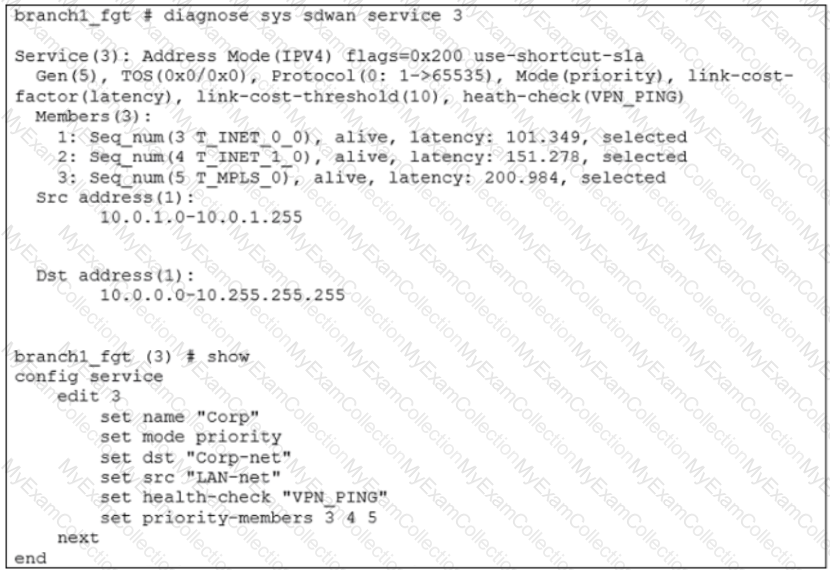
The exhibit shows the SD-WAN rule status and configuration.
Based on the exhibit, which change in the measured latency will make T_MPLS_0 the new preferred member?
What are two reasons for using FortiManager to organize and manage the network for a group of FortiGate devices? (Choose two.)
Refer to the exhibit.
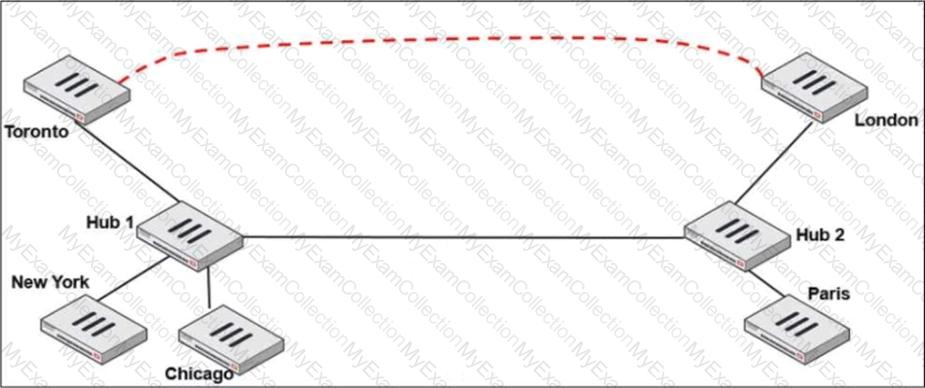
Two hub-and-spoke groups are connected through a site-to-site IPsec VPN between Hub 1 and Hub 2.
Which two configuration settings are required for Toronto and London spokes to establish an ADVPN shortcut? (Choose two.)
Refer to the exhibit.
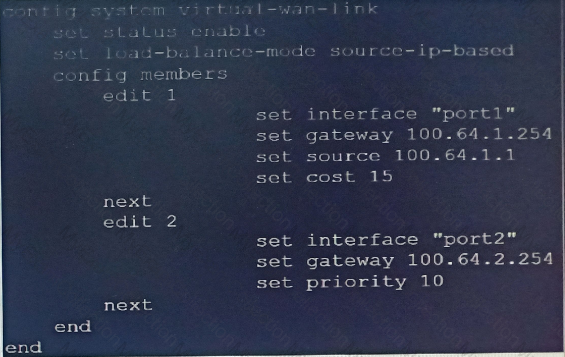
Based on the output shown in the exhibit, which two criteria on the SD-WAN member configuration can be used to select an outgoing interface in an SD-WAN rule? (Choose two.)
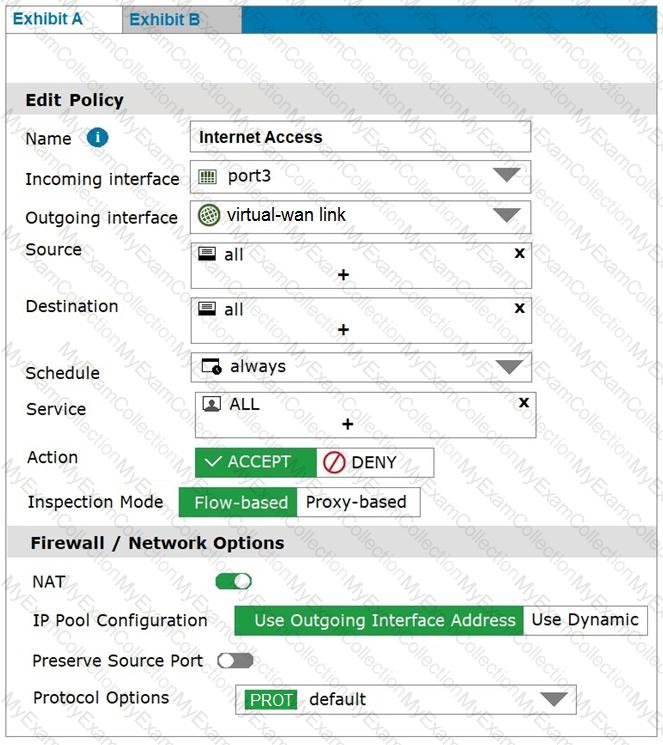
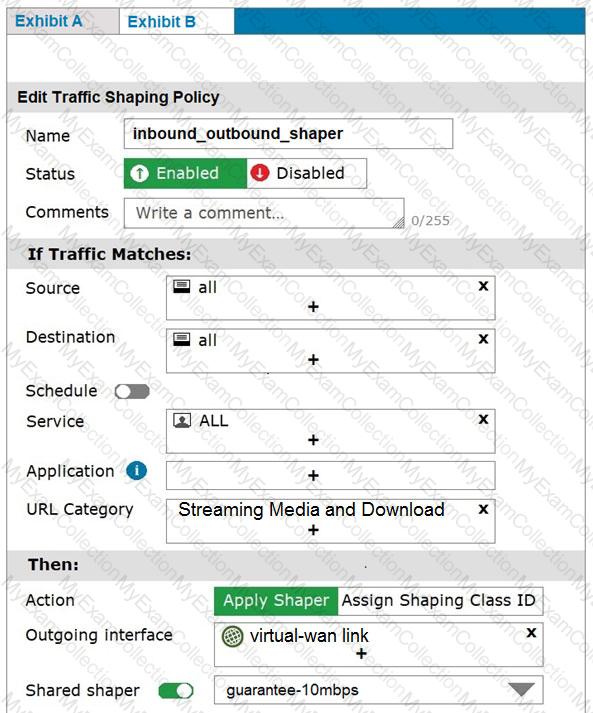
Exhibit A shows the firewall policy and exhibit B shows the traffic shaping policy.
The traffic shaping policy is being applied to all outbound traffic; however, inbound traffic is not being evaluated by the shaping policy.
Based on the exhibits, what configuration change must be made in which policy so that traffic shaping can be applied to inbound traffic?
Which two statements describe how IPsec phase 1 main mode id different from aggressive mode when performing IKE negotiation? (Choose two.)
Which two statements are true about using SD-WAN to steer local-out traffic? (Choose two.)
The administrator uses the FortiManager SD-WAN overlay template to prepare an SD-WAN deployment. With information provided through the SD-WAN overlay template wizard, FortiManager creates templates ready to install on spoke and hub devices.
Select three templates created by the SD-WAN overlay template for a spoke device. (Choose three.)
Which best describes the SD-WAN traffic shaping mode that bases itself on a percentage of available bandwidth?
Refer to the exhibit.
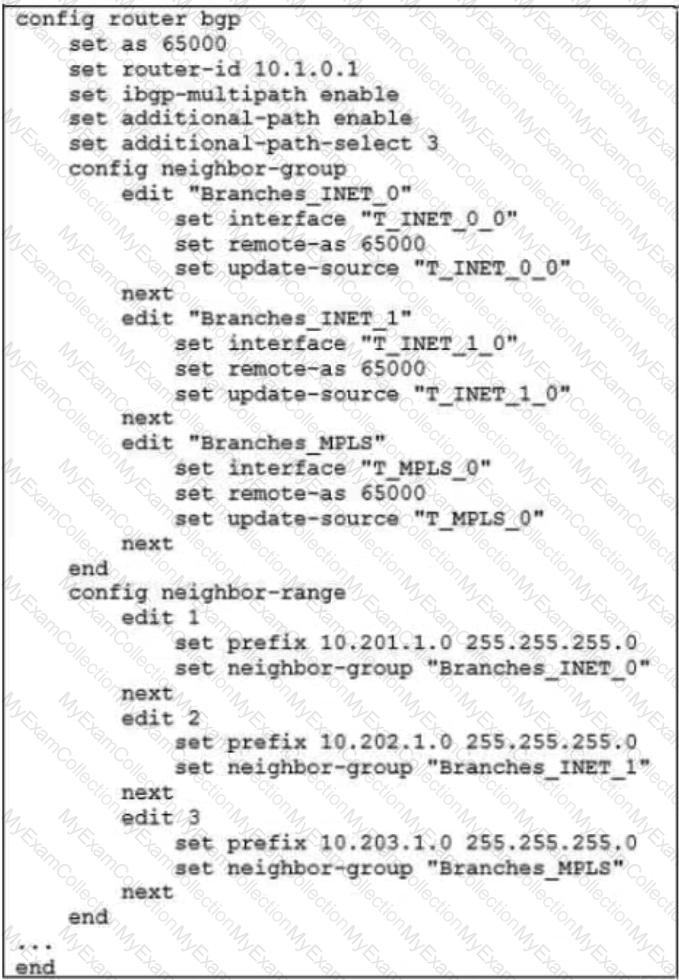
The exhibit shows the BGP configuration on the hub in a hub-and-spoke topology. The administrator wants BGP to advertise prefixes from spokes to other spokes over the IPsec overlays, including additional paths. However, when looking at the spoke routing table, the administrator does not see the prefixes from other spokes and the additional paths.
Based on the exhibit, which three settings must the administrator configure inside each BGP neighbor group so spokes can learn other spokes prefixes and their additional paths? (Choose three.)
Refer to the exhibit.
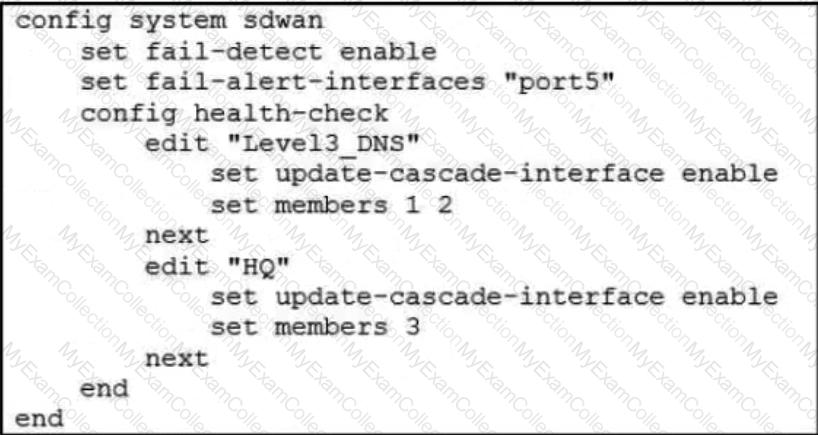
Based on the exhibit, which action does FortiGate take?
Refer to the exhibit.
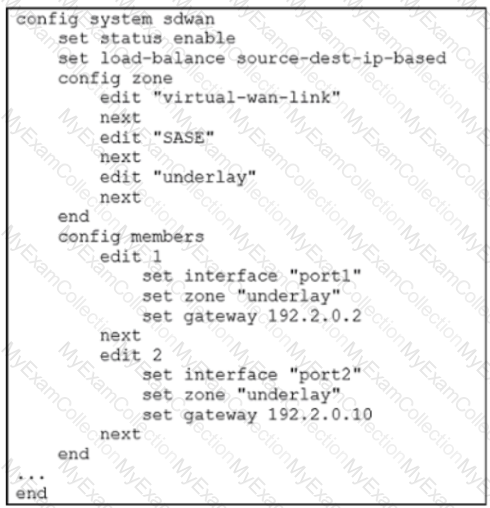
Which algorithm does SD-WAN use to distribute traffic that does not match any of the SD-WAN rules?
Refer to the exhibit.
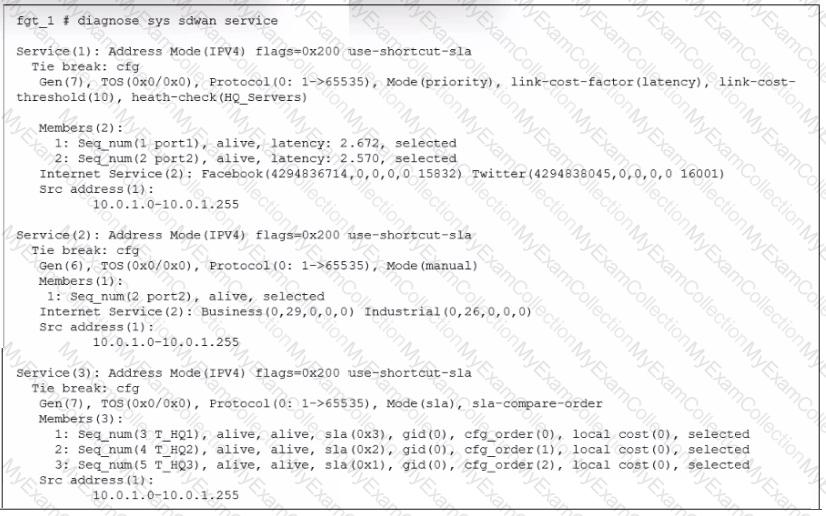
The exhibit shows output of the command diagnose 3vg sdwan service collected on a FortiGate device.
The administrator wants to know through which interface FortiGate will steer the traffic from local users on subnet 10.0.1.0/255.255.255.192 and with a destination of the business application Salesforce located on HO servers 10.0.0.1.
Based on the exhibits, which two statements are correct? (Choose two.)
In the default SD-WAN minimum configuration, which two statements are correct when traffic matches the default implicit SD-WAN rule? (Choose two )
What are two benefits of using forward error correction (FEC) in IPsec VPNs? (Choose two.)
What are two advantages of using an IPsec recommended template to configure an IPsec tunnel in an hub-and-spoke topology? (Choose two.)
Refer to the exhibit.
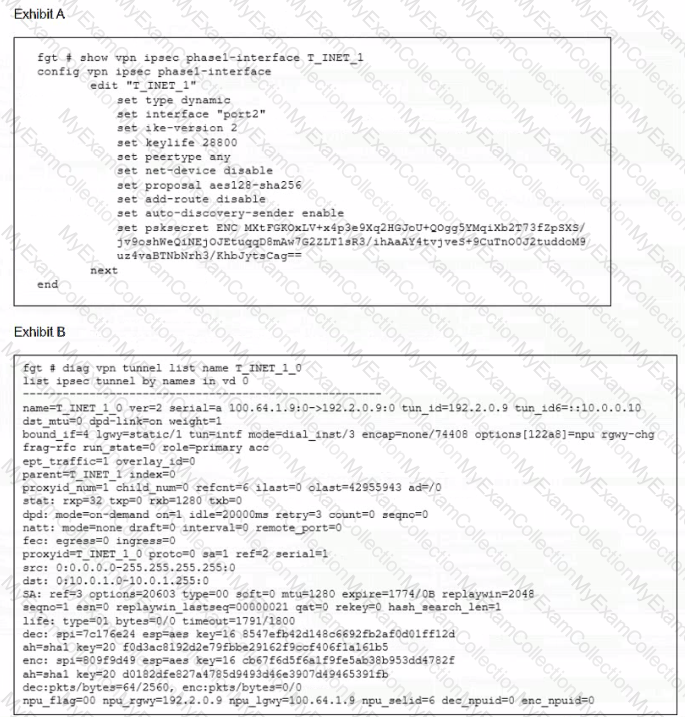
Which two statements about the IPsec VPN configuration and the status of the IPsec VPN tunnel are true? (Choose two.)
What three characteristics apply to provisioning templates available on FortiManager? (Choose three.)
Which two statements about SD-WAN central management are true? (Choose two.)
Refer to the exhibits.
Exhibit A
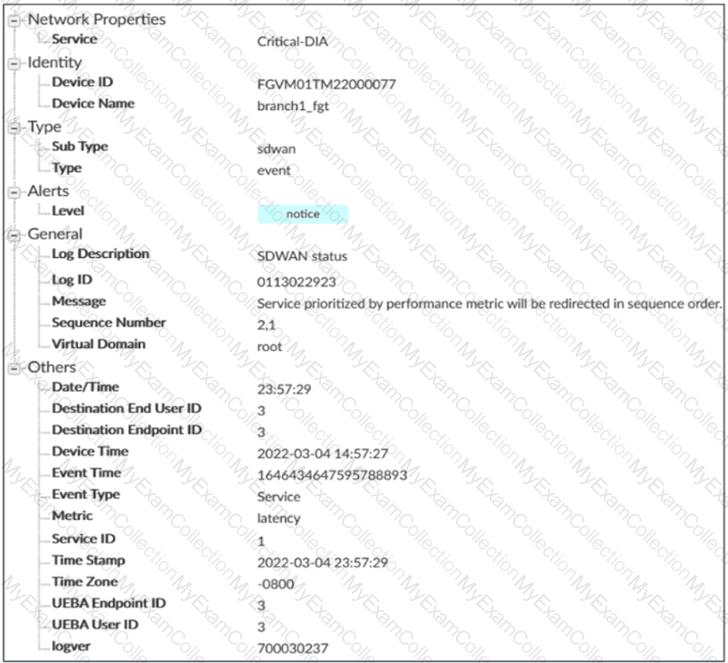
Exhibit B
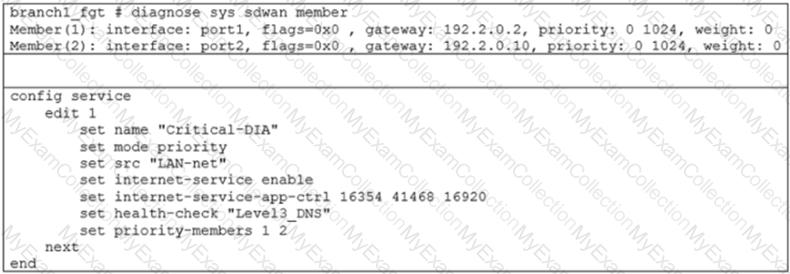
Exhibit A shows an SD-WAN event log and exhibit B shows the member status and the SD-WAN rule configuration.
Based on the exhibits, which two statements are correct? (Choose two.)

Which two conclusions for traffic that matches the traffic shaper are true? (Choose two.)
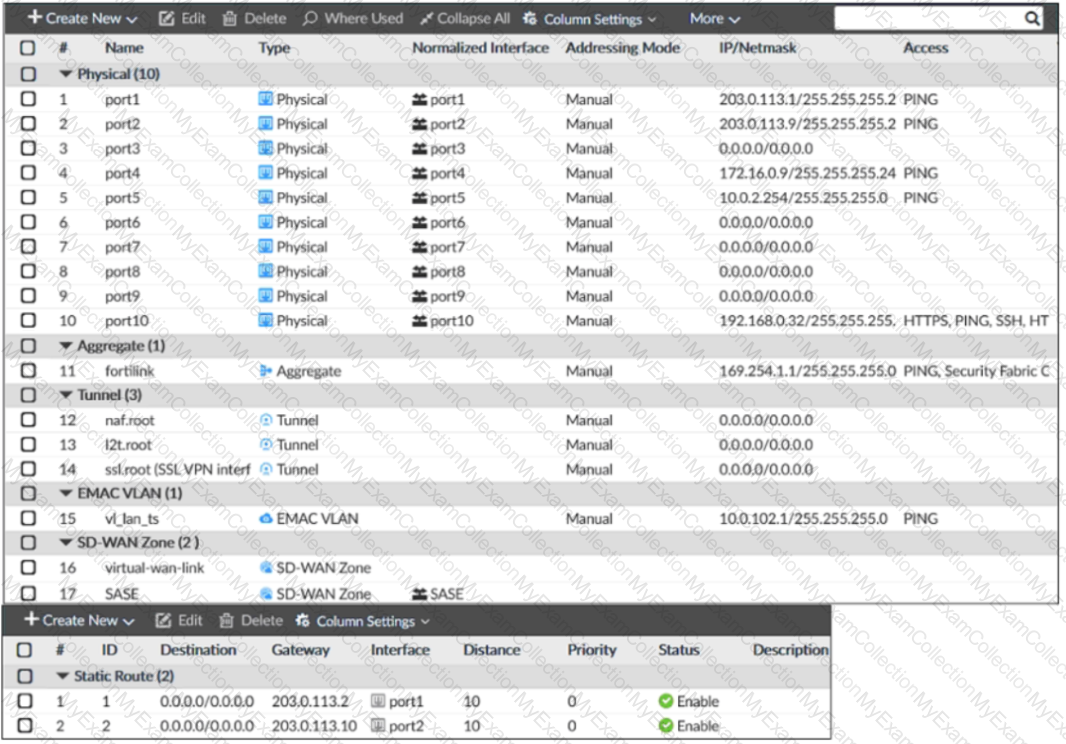
Exhibit B –

Exhibit A shows the system interface with the static routes and exhibit B shows the firewall policies on the managed FortiGate.
Based on the FortiGate configuration shown in the exhibits, what issue might you encounter when creating an SD-WAN zone for port1 and port2?

